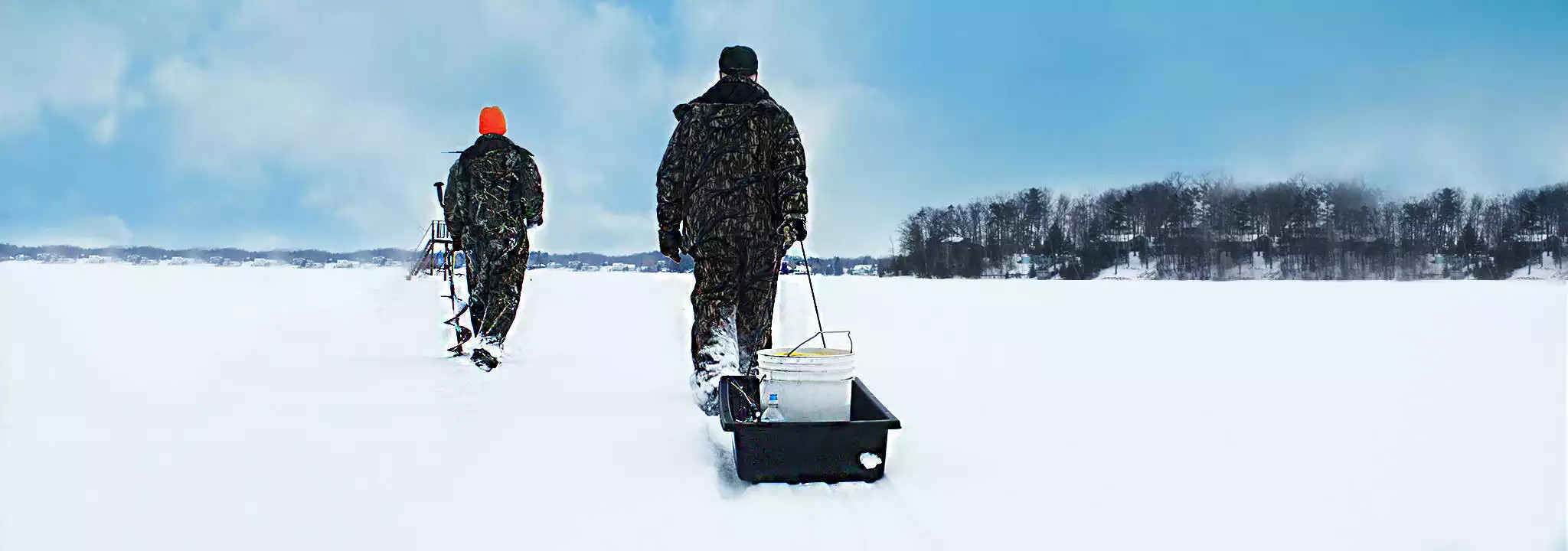Even though lakes have frozen over, the threat of aquatic invasive species (AIS) has not ceased. Just as they do in the summer, AIS can hitch a ride on fishing equipment during the winter. Although we think of winter as a time of dormancy, various plants, animals, and diseases that are considered ecologically dangerous continue to thrive while the snow flies. For instance, cold-tolerant Eurasian watermilfoil and curly-leaf pondweed are considered evergreens because they continue to grow under ice cover. This head start over native aquatic plants, which start growing in the spring, helps make invasive plant species more successful. Furthermore, Eurasian watermilfoil and curly-leaf pondweed can re-root from mere stem fragments; meaning any small part of the plant – which maintain large colonies during the winter – can break off and create a new plant elsewhere. That’s why it is important to check for and remove all plant parts from augers, fishing line, hooks, and anything else that might come in contact with lake water. Be sure to throw away plant parts in the garbage – not back into the water – so they don’t get the chance to spread.

Walleye infected with VHS
Cleaning ice fishing equipment is also important for removing AIS that are not visible. Spiny water fleas, zebra mussels, and quagga mussels all produce microscopic offspring which cannot be seen by the naked eye in their early life stages. Very serious contagious fish diseases like viral hemorrhagic septicemia (VHS) and whirling disease can also be transported from one body of water to another. In addition to cleaning equipment, anglers should never transport live fish or water away from a water body. An exception to this Wisconsin law is for bait minnows bought at a licensed Wisconsin live bait dealer. These minnows may be moved away live and used again in the same body of water, or in other waters if no lake or river water was added to their container. Unwanted minnows should be disposed of in the garbage.
To prevent the spread of AIS while ice fishing, anglers should:
- Inspect and clean all fishing equipment like hooks, lines, scoops, nets, and augers after each use.
- Decontaminate all equipment with a disinfection solution or allow to dry for at least 5 days.
- Drain all water from equipment and containers with fish before leaving the ice. Consider transporting harvested fish on ice.
- Only purchase live bait from a licensed Wisconsin bait dealer and properly dispose of unused bait.

